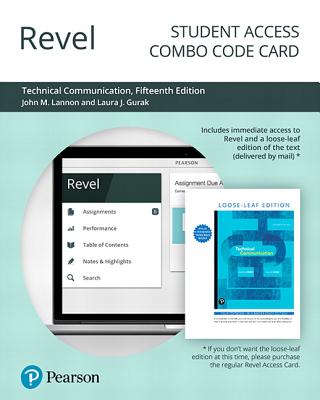Spoken, Multilingual and Multimodal Dialogue Systems: Development and Assessment (Hardcover)
暫譯: 口語、多語言及多模態對話系統:開發與評估 (精裝版)
Ramon Lopez Cozar Delgado, Masahiro Araki
- 出版商: Wiley
- 出版日期: 2005-11-01
- 售價: $5,120
- 貴賓價: 9.5 折 $4,864
- 語言: 英文
- 頁數: 272
- 裝訂: Hardcover
- ISBN: 0470021551
- ISBN-13: 9780470021552
海外代購書籍(需單獨結帳)
買這商品的人也買了...
-
 C++ Primer, 3/e 中文版
C++ Primer, 3/e 中文版$980$774 -
 C++ 程式設計與應用
C++ 程式設計與應用$799$639 -
 SQL 設計與運用範例集
SQL 設計與運用範例集$480$408 -
 C 程式設計藝術 (C How to Program, 4/e)
C 程式設計藝術 (C How to Program, 4/e)$780$702 -
 嵌入式系統導論, 3/e
嵌入式系統導論, 3/e$760$646 -
 Linux 指令詳解辭典
Linux 指令詳解辭典$650$514 -
 ASP.NET 徹底研究進階技巧─高階技巧與控制項實作
ASP.NET 徹底研究進階技巧─高階技巧與控制項實作$650$507 -
 Oracle 10g 資料庫管理實務
Oracle 10g 資料庫管理實務$680$537 -
 MySQL 管理者手札─跟 MySQL AB 徹底研究 MySQL (MySQL Administrator's Guide)
MySQL 管理者手札─跟 MySQL AB 徹底研究 MySQL (MySQL Administrator's Guide)$590$502 -
 Shell Programming 333 個應用範例技巧大全集
Shell Programming 333 個應用範例技巧大全集$560$437 -
 敏捷軟體開發:原則、樣式及實務 (Agile Software Development: Principles, Patterns, and Practices)
敏捷軟體開發:原則、樣式及實務 (Agile Software Development: Principles, Patterns, and Practices)$780$616 -
 打造個性化 XOOPS2 網站─佈景設計、模組開發
打造個性化 XOOPS2 網站─佈景設計、模組開發$580$493 -
 Linux 架站實務 2006-MIS、規劃、架設、管理、防毒
Linux 架站實務 2006-MIS、規劃、架設、管理、防毒$650$514 -
 計算機組織與設計 (Computer Organization and Design: The Hardware/Software Interface, 3/e)
計算機組織與設計 (Computer Organization and Design: The Hardware/Software Interface, 3/e)$680$646 -
 VoIP 網路電話技術
VoIP 網路電話技術$350$277 -
 資料庫系統原理 (Fundamentals of Database Systems, 4/e)
資料庫系統原理 (Fundamentals of Database Systems, 4/e)$860$679 -
 深入淺出 Java 程式設計, 2/e (Head First Java, 2/e)
深入淺出 Java 程式設計, 2/e (Head First Java, 2/e)$880$695 -
 SIP 會談啟始協議操典
SIP 會談啟始協議操典$680$537 -
 Linux Kernel 完全剖析
Linux Kernel 完全剖析$750$585 -
 Linux Mail Server 技術實務─架設、稽核、防毒、防垃圾信
Linux Mail Server 技術實務─架設、稽核、防毒、防垃圾信$580$458 -
 真‧影音轉檔王-打造 PSP、iPod、PDA、手機、DVD 行動劇院
真‧影音轉檔王-打造 PSP、iPod、PDA、手機、DVD 行動劇院$380$300 -
 軟體預先架構之美學 (Prefactoring)
軟體預先架構之美學 (Prefactoring)$580$458 -
 News Literacy, Informed Citizens and Consumer-Driven Media: The Future Landscape of American Journalism
News Literacy, Informed Citizens and Consumer-Driven Media: The Future Landscape of American Journalism$770$732 -
 Improving Adolescent Literacy: Content Area Strategies at Work
Improving Adolescent Literacy: Content Area Strategies at Work$3,890$3,696 -
 E-Portfolios in Higher Education: A Multidisciplinary Approach
E-Portfolios in Higher Education: A Multidisciplinary Approach$5,760$5,472
相關主題
商品描述
Dialogue systems are a very appealing technology with an extraordinary future. Spoken, Multilingual and Multimodal Dialogues Systems: Development and Assessment addresses the great demand for information about the development of advanced dialogue systems combining speech with other modalities under a multilingual framework. It aims to give a systematic overview of dialogue systems and recent advances in the practical application of spoken dialogue systems.
Spoken Dialogue Systems are computer-based systems developed to provide information and carry out simple tasks using speech as the interaction mode. Examples include travel information and reservation, weather forecast information, directory information and product order. Multimodal Dialogue Systems aim to overcome the limitations of spoken dialogue systems which use speech as the only communication means, while Multilingual Systems allow interaction with users that speak different languages.
- Presents a clear snapshot of the structure of a standard dialogue system, by addressing its key components in the context of multilingual and multimodal interaction and the assessment of spoken, multilingual and multimodal systems
- In addition to the fundamentals of the technologies employed, the development and evaluation of these systems are described
- Highlights recent advances in the practical application of spoken dialogue systems
This comprehensive overview is a must for graduate students and academics in the fields of speech recognition, speech synthesis, speech processing, language, and human–computer interaction technolgy. It will also prove to be a valuable resource to system developers working in these areas.
Table of Contents:
Preface.1 Introduction to Dialogue Systems.
1.1 Human-Computer Interaction and Speech Processing.
1.2 Spoken Dialogue Systems.
1.3 Multimodal Dialogue Systems.
1.4 Multilingual Dialogue Systems.
1.5 Dialogue Systems Referenced in This Book.
1.6 Area Organisation and Research Directions.
1.7 Overview of the Book.
1.8 Further Reading.
2 Technologies Employed to Set Up Dialogue Systems.
2.1 Input Interface.
2.2 Multimodal Processing.
2.3 Output Interface.
2.4 Summary.
2.5 Further Reading.
3 Multimodal Dialogue Systems.
3.1 Benefits of Multimodal Interaction.
3.2 Development of Multimodal Dialogue Systems.
3.3 Summary.
3.5 Further Reading.
4 Multilingual Dialogue Systems.
4.1 Implications of Multilinguality in the Architecture of Dialogue Systems.
4.2 Multilingual Dialogue Systems Based on Interlingua.
4.3 Multilingual Dialogue Systems Based on Web Applications.
4.4 Summary.
4.5 Further Reading.
5 Dialogue Annotation, Modelling and Management.
5.1 Dialogue Annotation.
5.2 Dialogue Modelling.
5.3 Dialogue Management.
5.4 Implications of Multimodality in the Dialogue Management.
5.5 Implications of Mulitlinguality in the Dialogue Management.
5.6 Implications of Task Independency in the Dialogue Management.
5.7 Summary.
5.8 Further Reading.
6 Development Tools.
6.1 Tools for Spoken and Multilingual Dialogue Systems.
6.2 Standards and Tools for Multimodal Dialogue Systems.
6.3 Summary.
6.4 Further Reading.
7 Assessment.
7.1 Overview of Evaluation Techniques.
7.2 Evaluation of Spoken and Multilingual Dialogue Systems.
7.3 Evaluation of Multimodal Dialogue Systems.
7.4 Summary.
7.5 Further Reading.
Appendix A Basic Tutorial on VoiceXML.
Appendix B Multimodal Databases.
Appendix C Coding Schemes for Multimodal Resources.
Appendix D URLs of Interest.
Appendix E List of Abbreviations.
References.
Index.
ype" content="text/html; charset=big5">
1
商品描述(中文翻譯)
描述:
對話系統是一項非常吸引人的技術,擁有非凡的未來。《口語、多語言和多模態對話系統:開發與評估》針對對於結合語音與其他模態的先進對話系統開發的巨大需求,提供了系統性的概述。它旨在提供對話系統及其在口語對話系統實際應用中的最新進展的全面概述。
口語對話系統是基於計算機的系統,旨在使用語音作為互動模式來提供信息和執行簡單任務。示例包括旅行信息和預訂、天氣預報信息、目錄信息和產品訂購。多模態對話系統旨在克服僅使用語音作為唯一通信手段的口語對話系統的限制,而多語言系統則允許與講不同語言的用戶進行互動。
- 提供標準對話系統結構的清晰快照,通過在多語言和多模態互動及口語、多語言和多模態系統的評估背景下,闡述其關鍵組件
- 除了所使用技術的基本原理外,還描述了這些系統的開發和評估
- 突出顯示口語對話系統在實際應用中的最新進展
這本全面的概述對於語音識別、語音合成、語音處理、語言和人機互動技術領域的研究生和學者來說是必備的資源。它對於在這些領域工作的系統開發者也將是一個有價值的資源。
目錄:
前言。
1 對話系統介紹。
1.1 人機互動與語音處理。
1.2 口語對話系統。
1.3 多模態對話系統。
1.4 多語言對話系統。
1.5 本書中引用的對話系統。
1.6 領域組織與研究方向。
1.7 本書概述。
1.8 進一步閱讀。
2 設置對話系統所使用的技術。
2.1 輸入介面。
2.2 多模態處理。
2.3 輸出介面。
2.4 總結。
2.5 進一步閱讀。
3 多模態對話系統。
3.1 多模態互動的好處。
3.2 多模態對話系統的開發。
3.3 總結。
3.5 進一步閱讀。
4 多語言對話系統。
4.1 多語言性在對話系統架構中的影響。
4.2 基於中介語的多語言對話系統。
4.3 基於網絡應用的多語言對話系統。
4.4 總結。
4.5 進一步閱讀。
5 對話註釋、建模與管理。
5.1 對話註釋。
5.2 對話建模。
5.3 對話管理。
5.4 多模態在對話管理中的影響。
5.5 多語言性在對話管理中的影響。
5.6 任務獨立性在對話管理中的影響。
5.7 總結。
5.8 進一步閱讀。
6 開發工具。
6.1 口語和多語言對話系統的工具。
6.2 多模態對話系統的標準和工具。
6.3 總結。
6.4 進一步閱讀。
7 評估。
7.1 評估技術概述。
7.2 口語和多語言對話系統的評估。
7.3 多模態對話系統的評估。
7.4 總結。
7.5 進一步閱讀。
附錄 A VoiceXML 基本教程。
附錄 B 多模態數據庫。
附錄 C 多模態資源的編碼方案。
附錄 D 相關網址。
附錄 E 縮寫列表。
參考文獻。
索引。

















